- | 9:00 am
Spectacle architecture is back
Buildings went over the top in 2023, and they’re staying there.
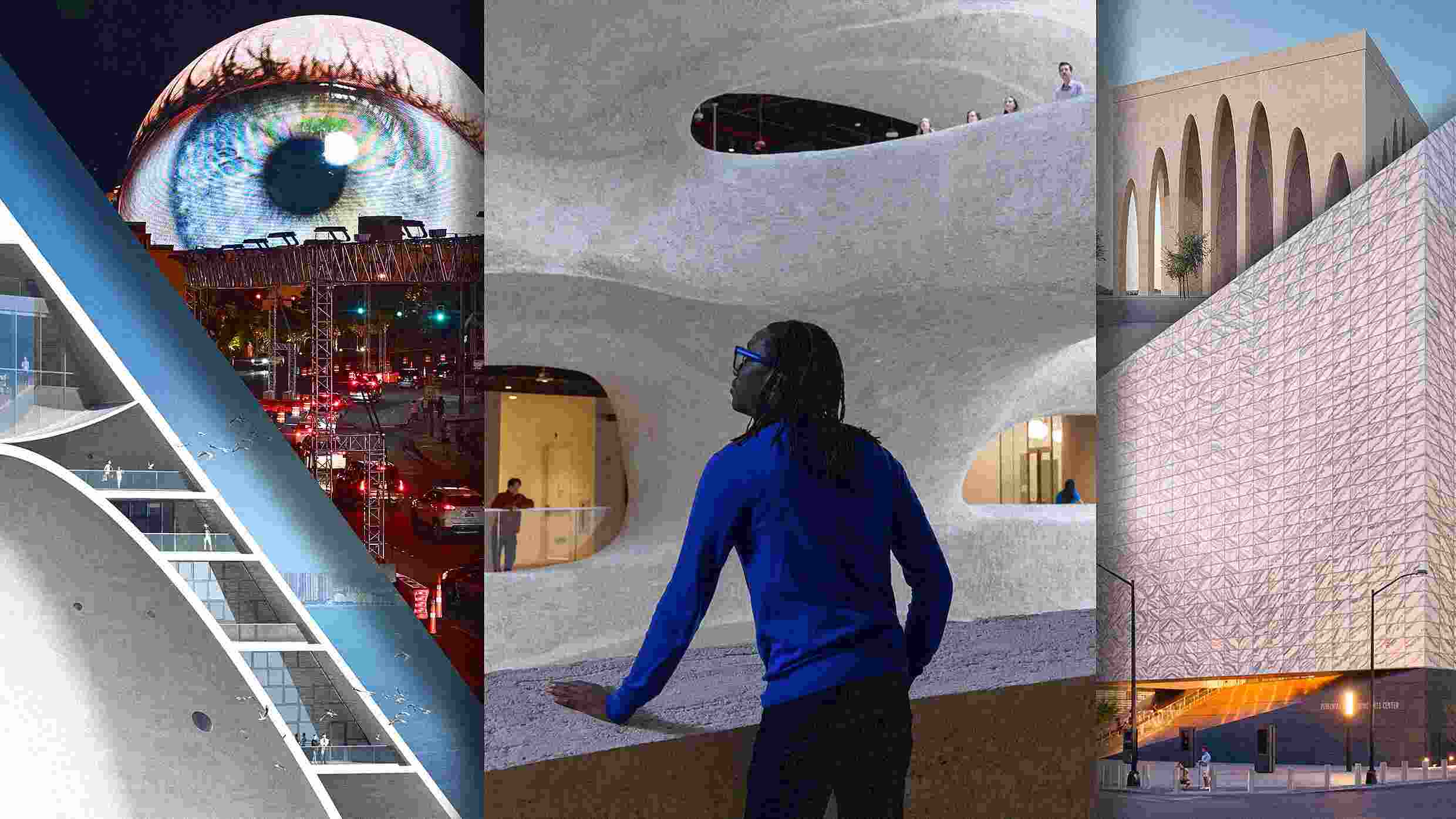
When a 367-foot-tall eyeball started blinking in Las Vegas over the summer, the world’s architectural standards got reset. The eye was a video image projecting out from the Sphere, one of the most bombastic buildings to be completed in 2023. A performing arts venue, the Sphere is, as the name suggests, a giant orb measuring as tall as a 35-story building. To boot, it’s covered in 1.2 million LEDs, which make the round facade a big ball of a screen capable of shining images, ads, artworks, and eyeballs onto the Las Vegas strip and beyond. As much an external stage as an internal theater seating more than 18,000, the Sphere is undoubtedly the most over-the-top building to open in 2023.
But it was not alone. Around the world, new buildings have pushed the boundaries of reason and purpose, with outlandish physical forms and possibly deranged business models. Some are just outright bonkers to behold; others may stand the test of time as buildings that improve the world and the way we experience it. All of these buildings ditched subtlety and reserve for an approach that uses boldness to demand attention. They’re all a sign that architecture has entered a new age of spectacle.
There may be no single reason spectacle architecture has emerged so forcefully over the last year, but it’s at least partially a product of the post-pandemic world. The pendulum is swinging away from the muted, insular days of the early pandemic, and towards a place that’s more open, experiential, and unafraid. The designers and developers of the spectacle buildings seem to be offering the architectural opposite of lockdowns and six-foot bubbles, with flashy colors, big gathering spaces, and sights to see and share. The years-long gestation period for new buildings means that ideas that first emerged during the pandemic are just now entering or completing construction. For many people around the world, these kinds of buildings will be a welcome reminder that life doesn’t have to be so constrained.
Of course, this is not pure altruism. There’s clearly money to be made. The Sphere is probably the most extreme example of spectacle architecture to emerge in recent years, with its tech-richness and Las Vegas location positioning it to be the stage for outlandish performances, both on its exterior and within. Even for Las Vegas, where there’s no shortage of attention-luring spectacles, the Sphere is hard to ignore.
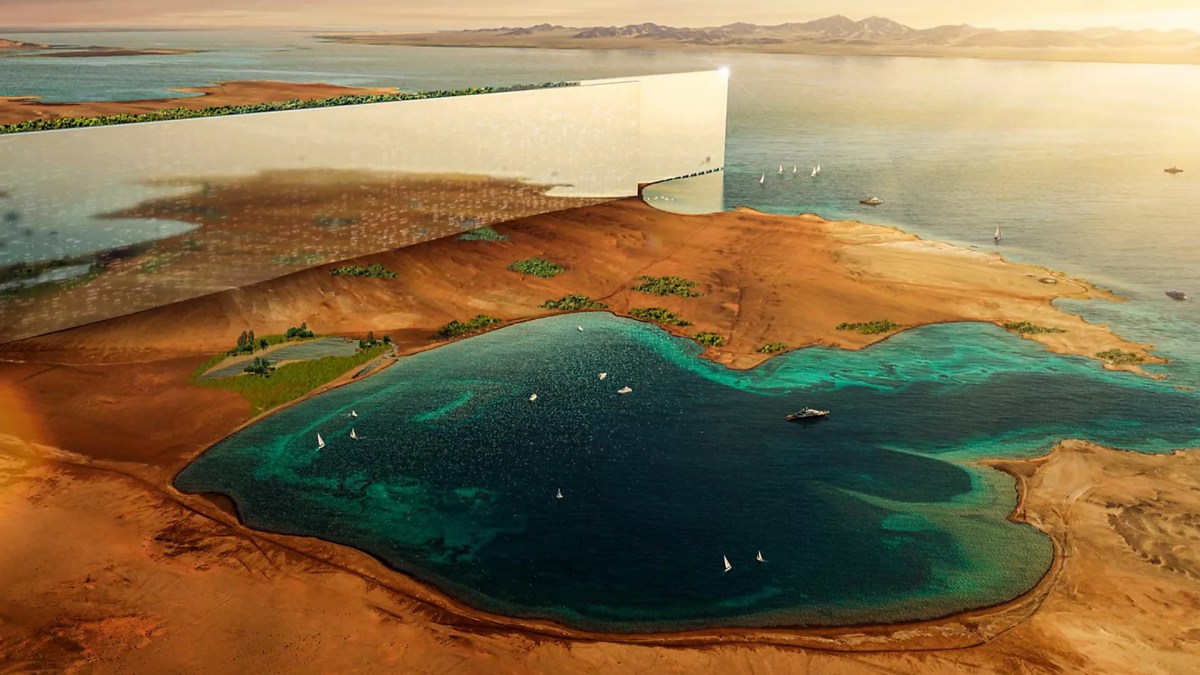
That’s also part of the thinking behind the Line, another absurd shape-inspired architecture project that’s being developed by the Kingdom of Saudi Arabia. True to name, it’s a line-shaped building, and one that its developers suggest will stretch 105 miles through the desert. The project, which may end up more pipe dream than bricks and mortar, is part of a larger and proportionally absurd citymaking effort underway in Saudi Arabia called Neom. The kingdom’s oil fields of money have drawn some of the world’s top architects to contribute to the vision, buying it at least some credibility in the face of glaring human rights violations. It’s a two-way deal, though, with such a well-funded blank-slate city design project giving these firms a rare opportunity to deeply explore architectural concepts and ideas that wouldn’t make it past the initial meeting with any other developer.
A recently announced building in that effort is the Mukaab, a 1,300-foot-tall cube-shaped city-in-a-building that would contain what its developers call an “immersive experiential destination” of digital screens and holographics. Towering over its entire surroundings in Riyadh like some giant’s dropped toy, the Mukaab is an urban imposition in the extreme.
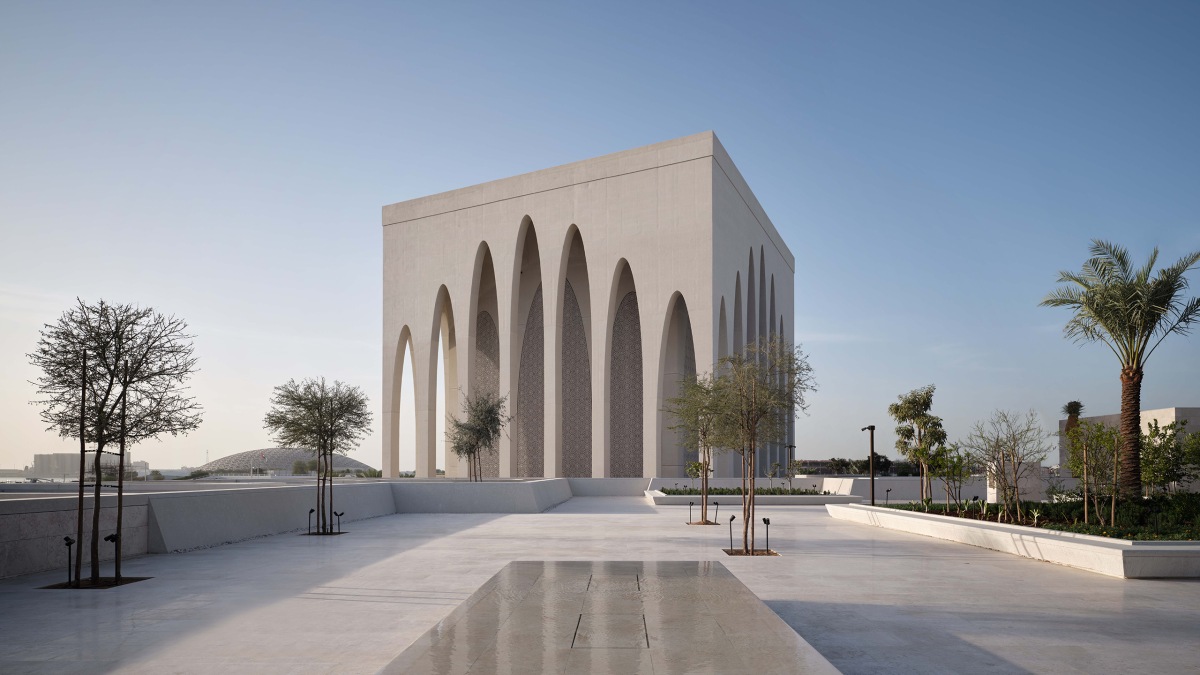
Cubes have been used by architects for generations, the Kaaba in Mecca being perhaps the prime example. More recent examples, including the Perelman Performing Arts Center in New York, show the humble form can translate into excellent buildings that mesh with and augment their neighborhoods. Saudi Arabia’s cube, on the other hand, is designed merely to be seen, and likely from a distance.
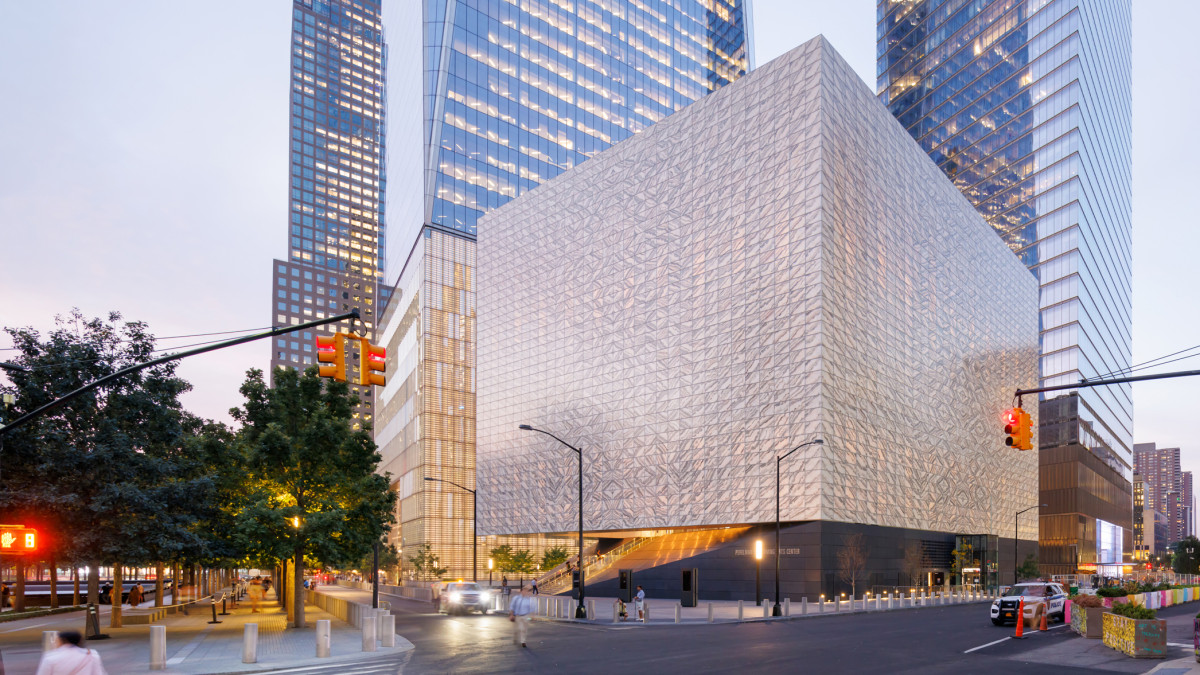
As exhibitions of wealth and power, the Saudi projects may have already achieved their purpose without coming to substantial completion. Often this is the impetus behind spectacle architecture anyway. This kind of prestige posturing is probably best seen in the race to build the world’s tallest towers. In 2023, a new contender rose in Kuala Lumpur, Malaysia. Merdeka 118, a swordfish-looking tower rising more than 2,200 feet with 118 stories, is now the world’s second tallest building. As the headquarters of a Malaysian investment bank, it’s a million square feet of office space coming online at a time when office space is an uncertain prospect.
Being tall is not the only way to grab attention, as we saw earlier this year when, without permits or approval, the Elon Musk-owned Twitter installed a giant strobing X on the roof of its San Francisco offices. Likely little more than a publicity stunt to announce the platform’s rebrand, the 30-foot sign briefly turned the architecture of the building into an urban onslaught, shining directly into the windows of neighboring residences. City building inspectors were not pleased. Within days the sign was removed, but by then images and video of the flashing, blinding light had spread widely—on X, no less.
Not every spectacle has to be so tacky, though. Several new buildings show that taking physical form over the top can be done elegantly and purposefully. At the American Museum of Natural History’s Richard Gilder Center for Science, Education, and Innovation, designed by the Chicago-based architecture firm Studio Gang, an organic, almost skeletal atrium creates a new connection for the sprawling museum. Bleeding out to the exterior, the cave-like walls draw visitors into what is one of the most exciting new buildings completed in 2023.
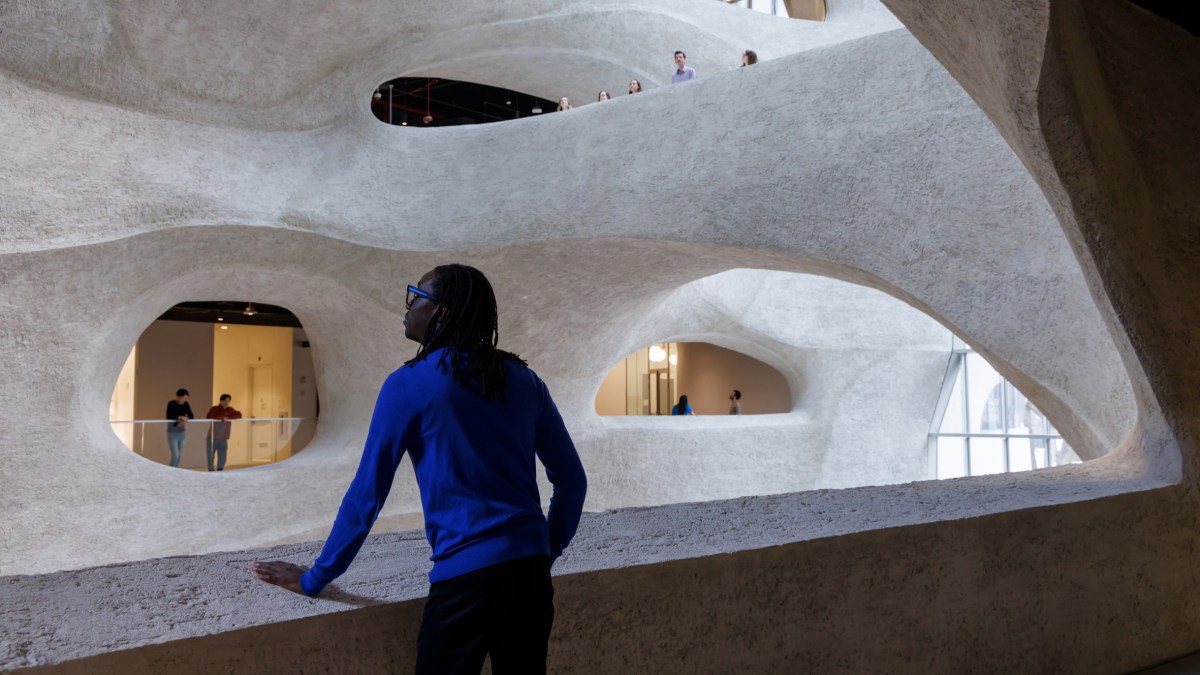
In London, an industrial building abandoned for years has undergone a similarly public-facing refresh that’s created a huge new icon for the city. The Battersea Power Station, a former coal-fired facility that provided a fifth of the city’s electricity, is now a diverse and stunning mixed used building with hundreds of residences, a shopping mall, and office spaces, including a new outpost for Apple. The historically landmarked industrial building, with its four huge smokestacks still intact, is a standout project anchoring a major new neighborhood redevelopment.
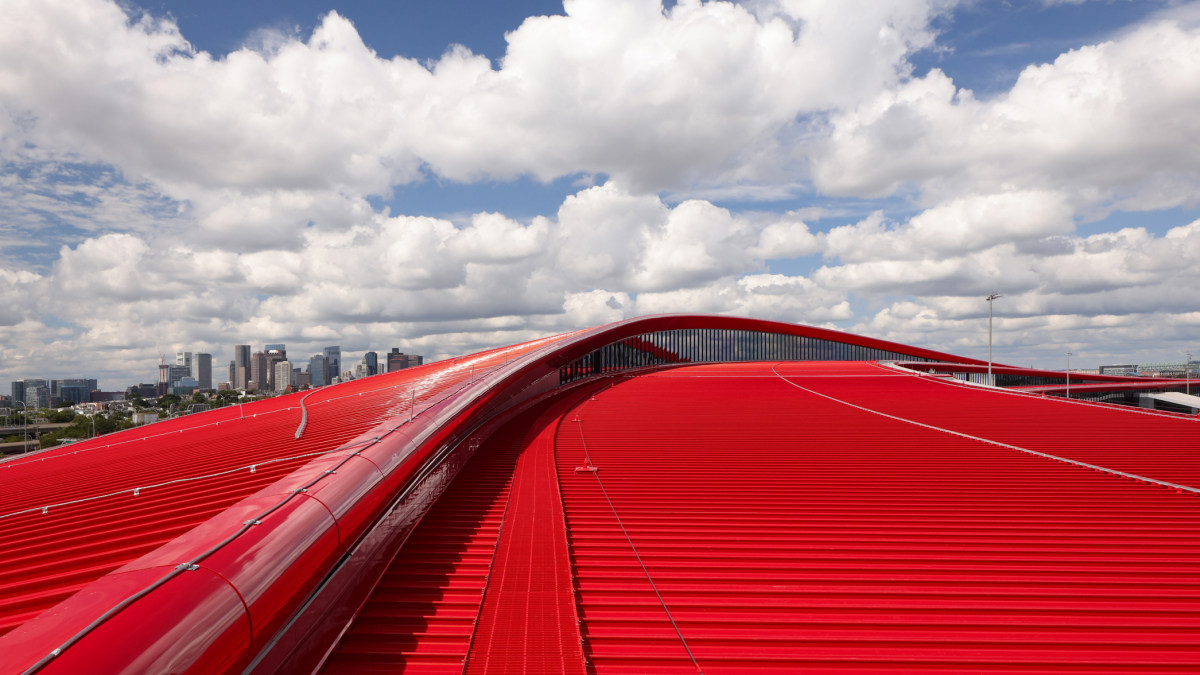
The newest building to be seen in Boston is a bright and shining welcome mat at the city’s international airport. A new terminal is a sleek spaceship of a building clad in boisterous bright red. Inside, the terminal solves many of the problems plaguing what’s often ranked one of the worst airports in the country, but from the outside it’s a sports car of a structure, that’s all flash and speed. With a type of prismatic paint specially developed for the project, it’s intended to stand out in the tumultuous coastal climate while serving as a big, gleaming statement for arriving international flights.
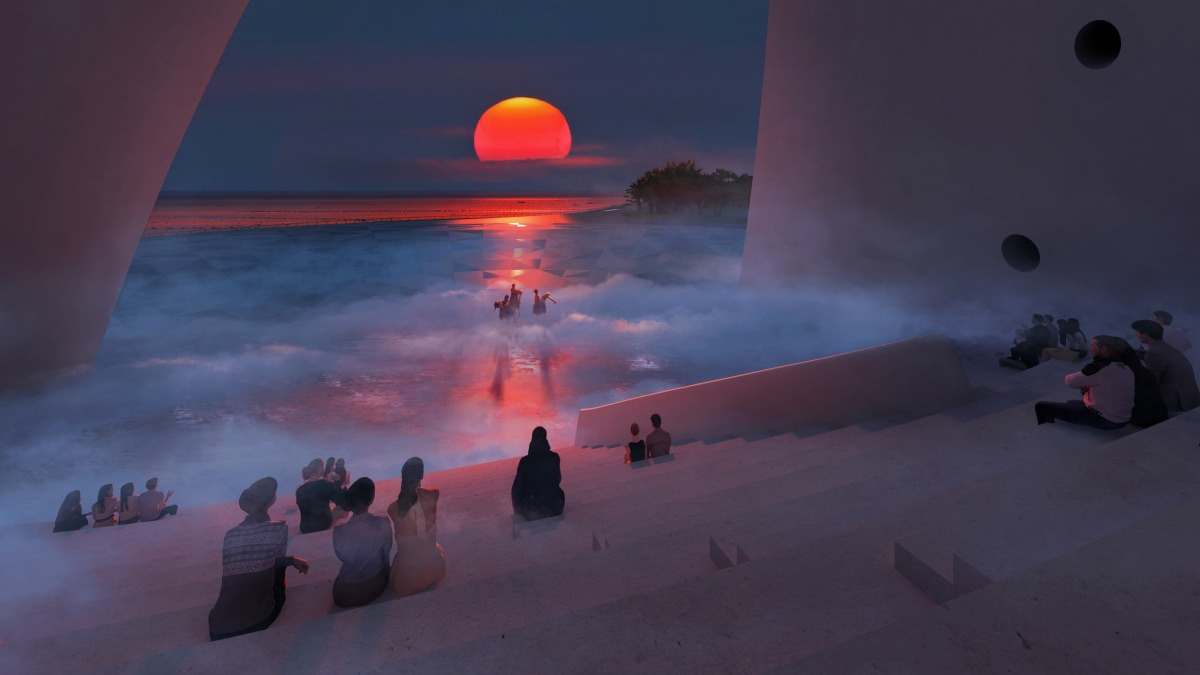
Some spectacle buildings go beyond mere commerce. In the northeastern Chinese city of Yantai, a bizarre and lovely new building is taking shape for the primary purpose of worshiping the sun. Shaped like a sliced open power plant’s cooling tower, the building is an open face to the sunrise and the sea, and provides space for locals to engage in a centuries-old tradition of collective solar appreciation. In fact, the building was designed by the sun itself, with its alignments on equinoxes and solstices determining openings and social spaces in what will be a multipurpose cultural center in the city. With a theater, a library, and several event spaces, the building is also practical. But at its soul, this wild structure is built to forge a more physical connection between people and the center of our solar system.
The point of all these buildings is simply to pivot away from the doom and gloom of recent years: the lockdowns and deaths of the pandemic, inflation, global wars, tumultuous U.S. politics, economic recessions, the threats and consequences of climate change, and so much else. Most spectacle architecture may be of the rose-tinted variety, giving people a way to look past those crises; some may offer a more humane way of living through them.
Whether obnoxious or serene, these spectacle buildings are setting the stage for a stylistic revolution. With extreme, sometimes otherworldly buildings somehow managing to get built, they’re showing that the weird and the wonderful can still take architectural form. The world may be just getting the first tastes of a slate of ridiculous, interesting, and potentially beautiful new spectacles.





































